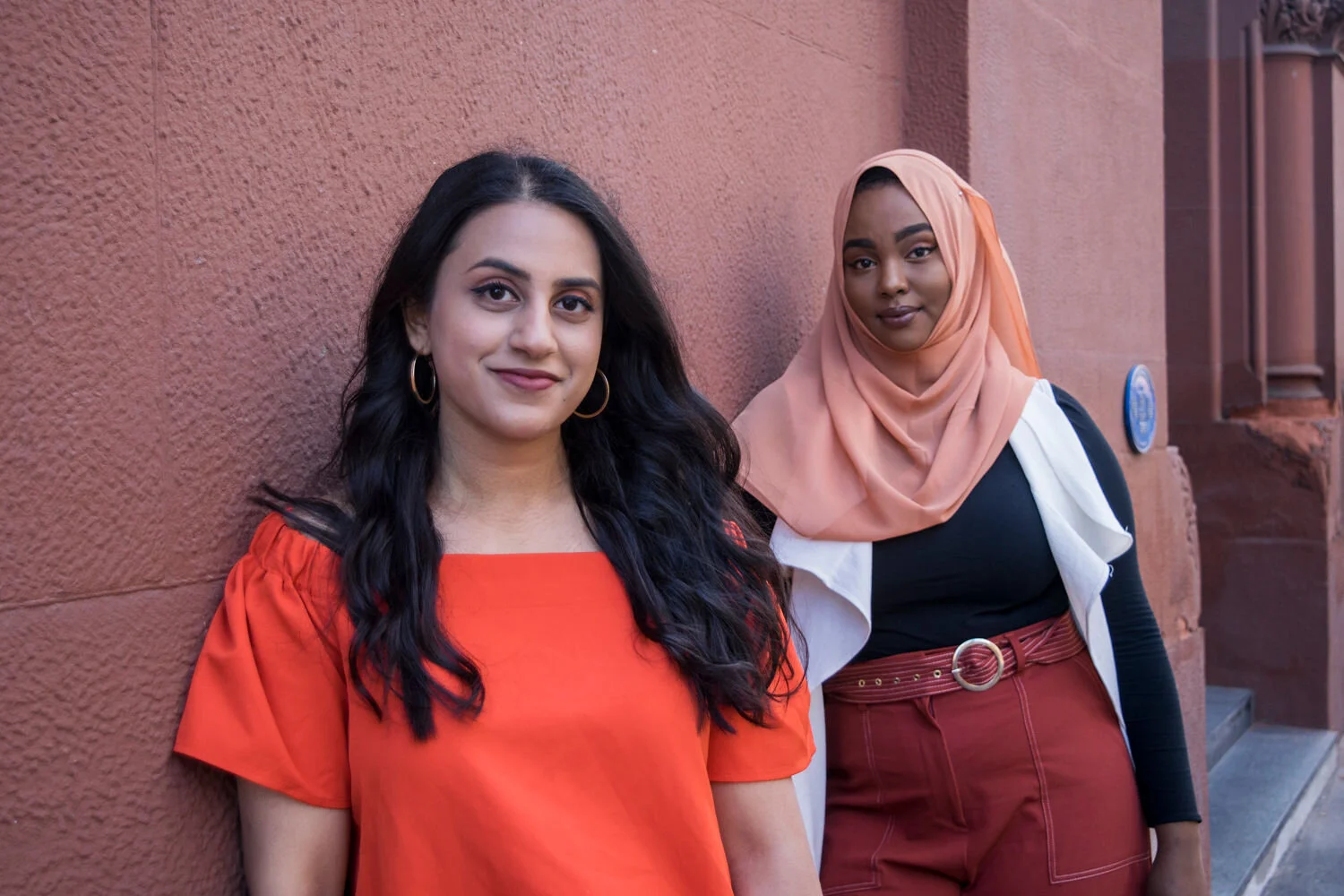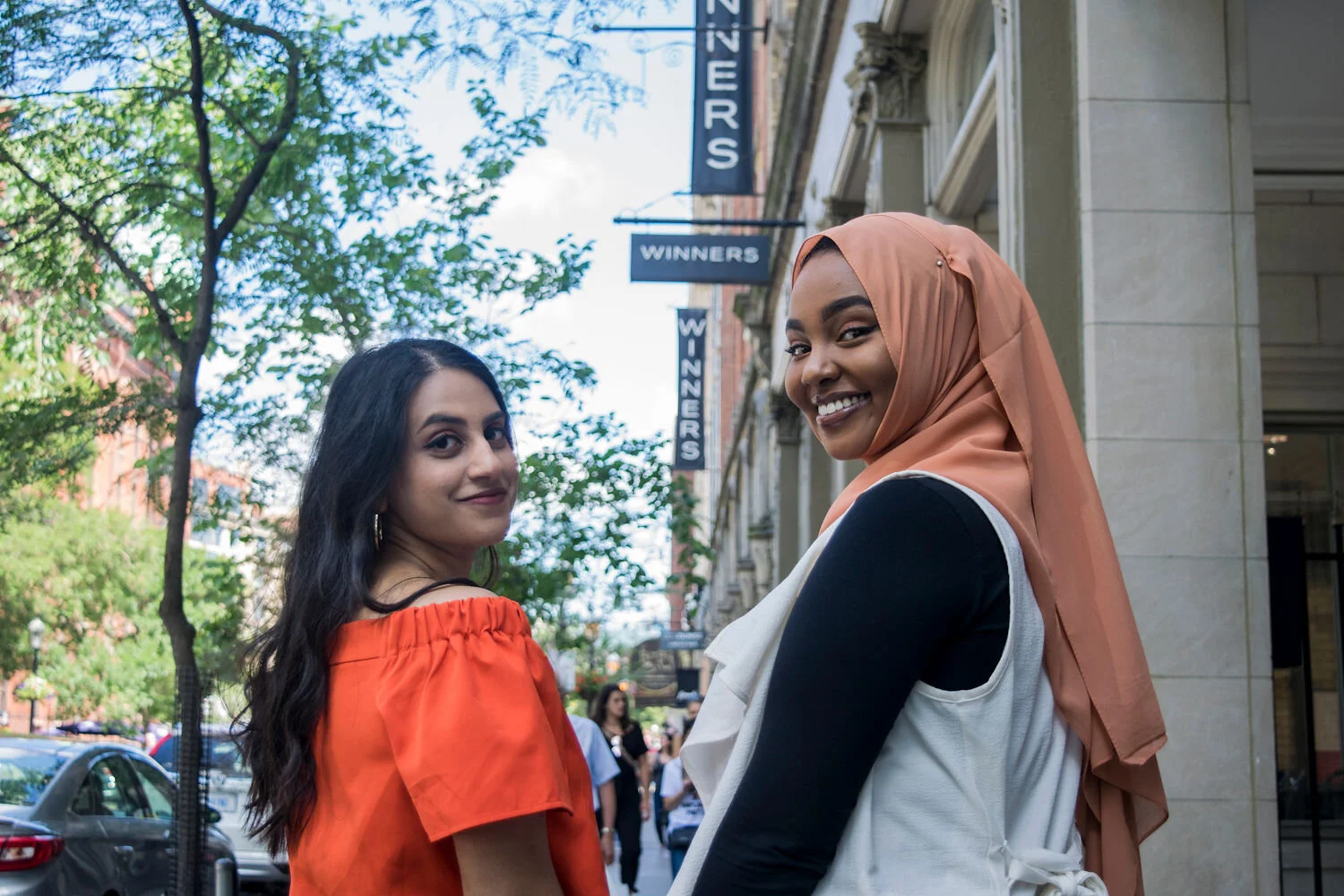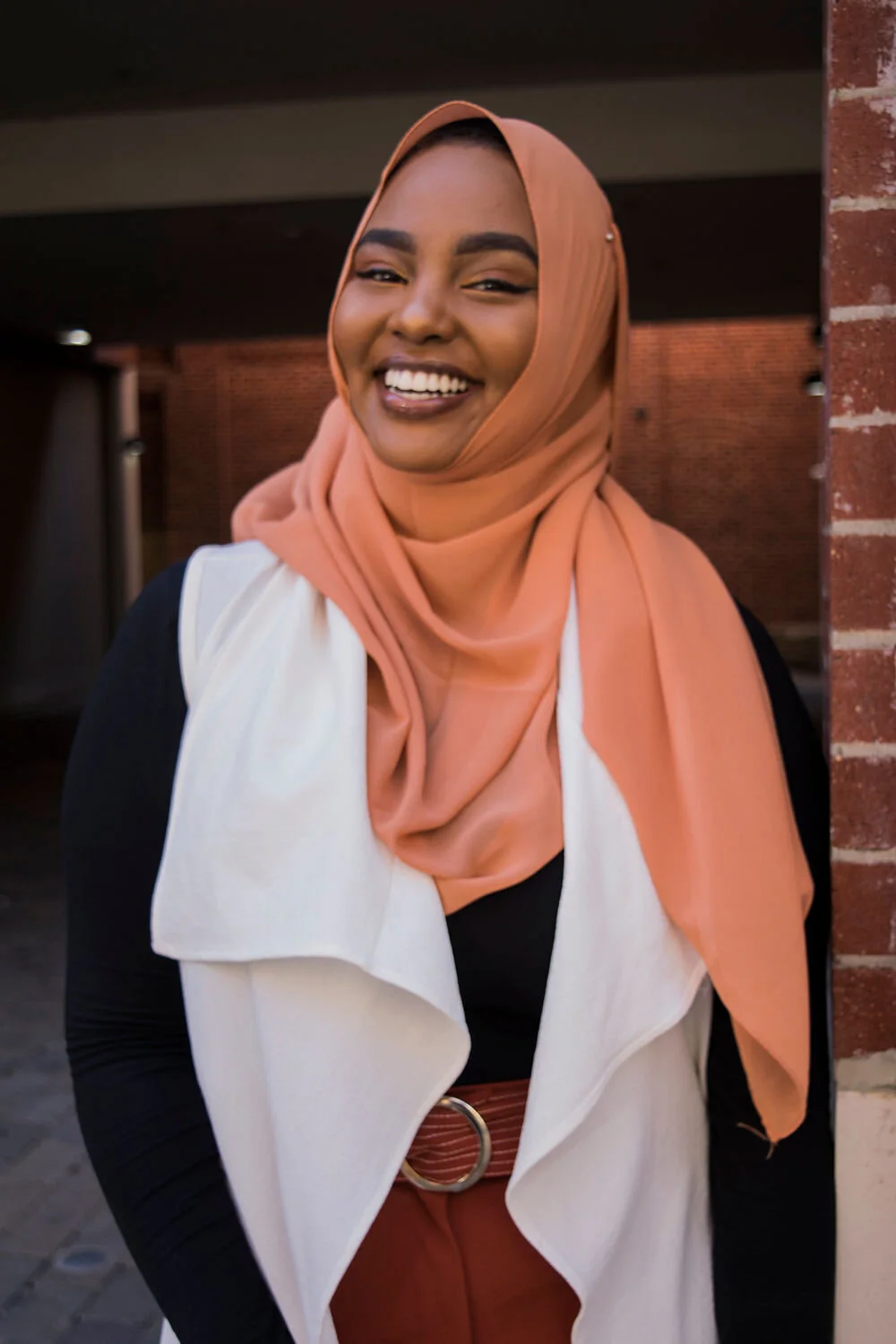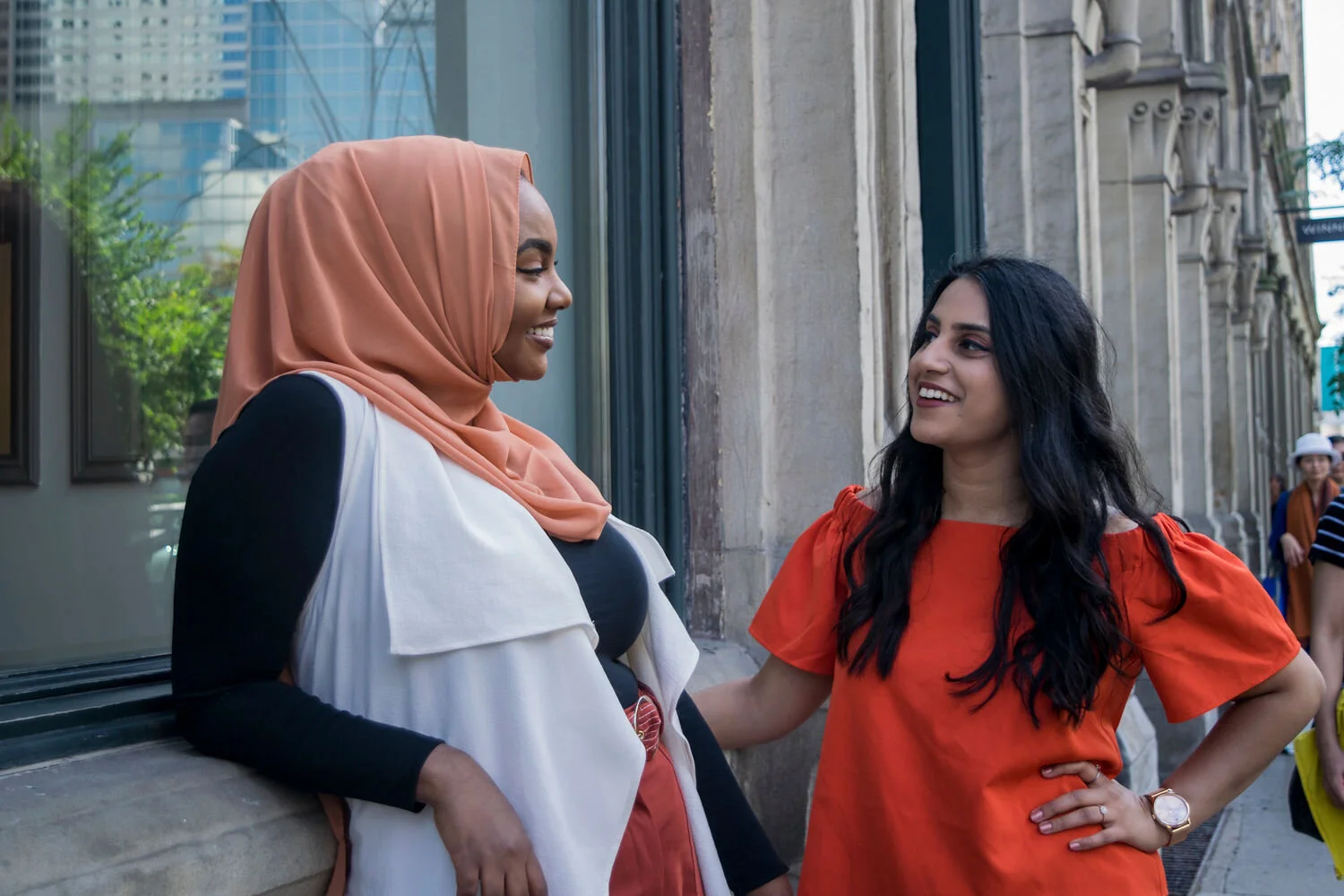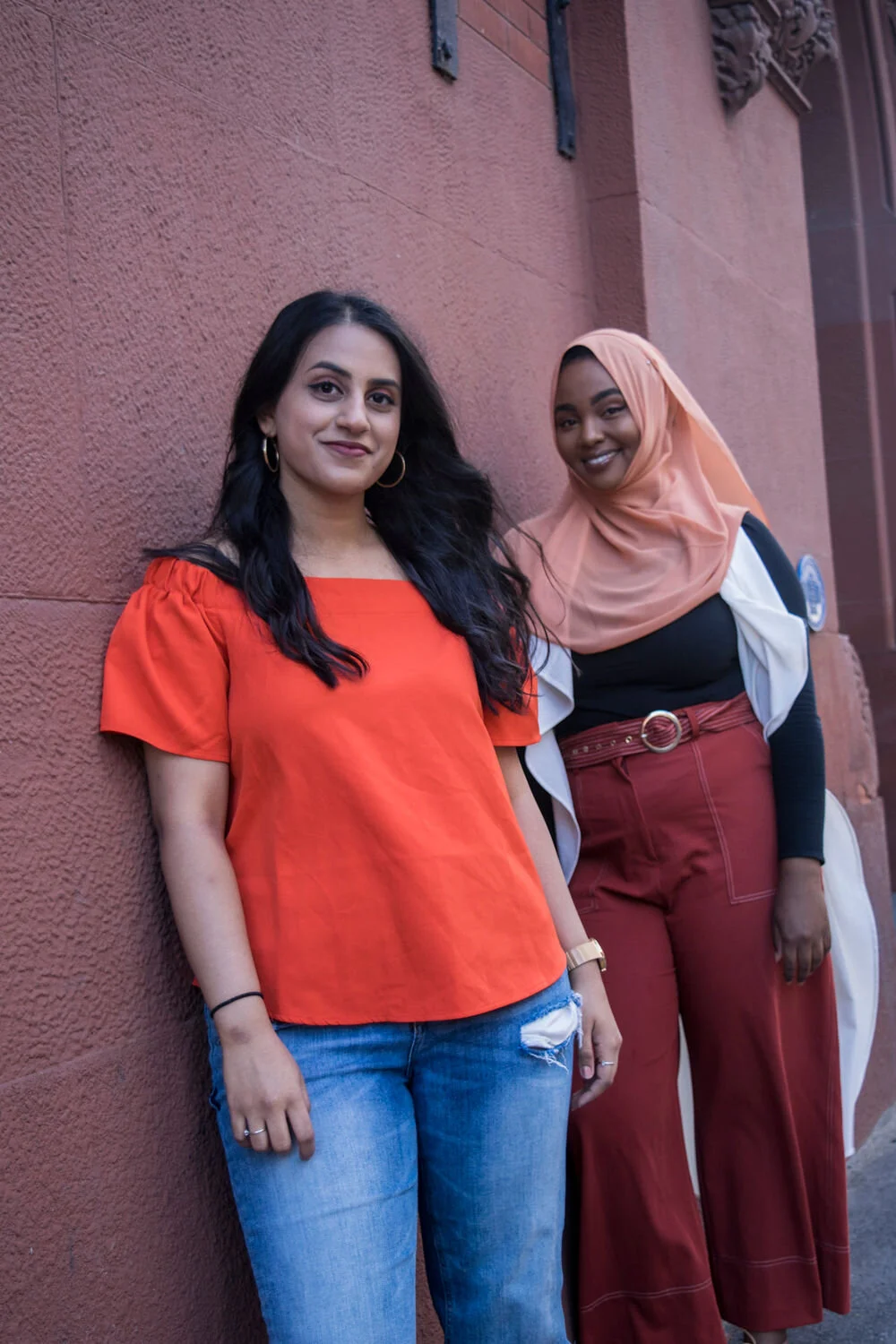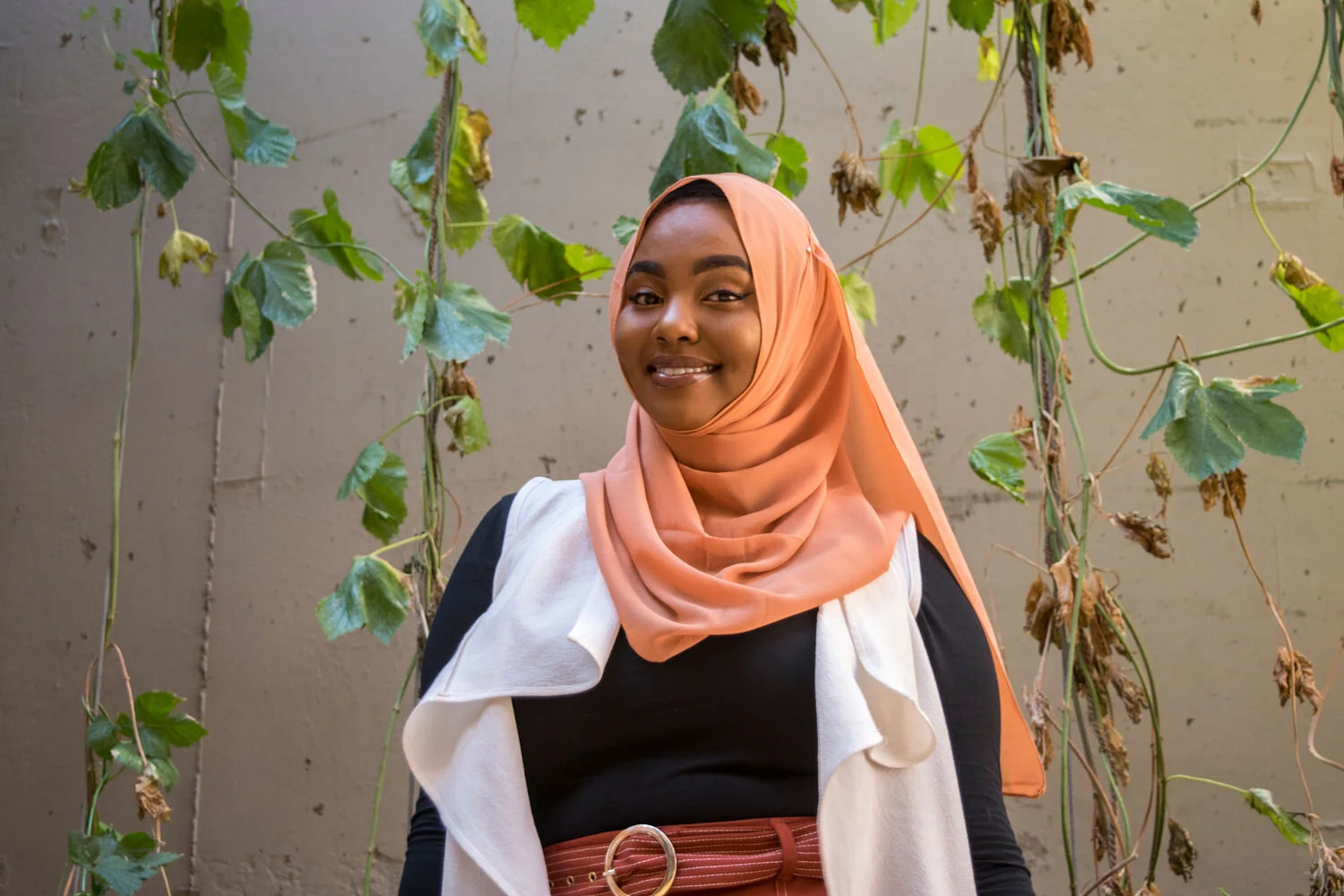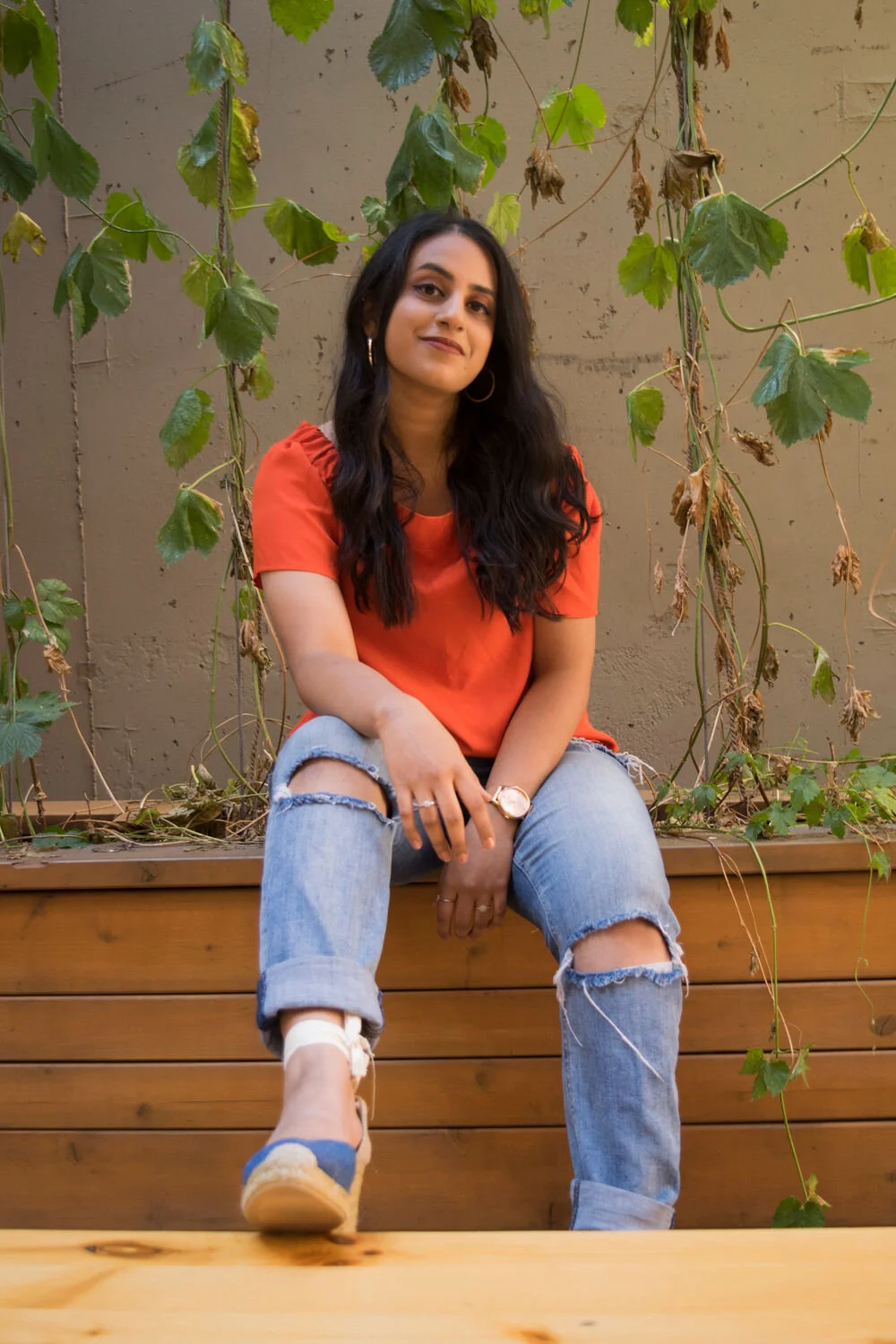Her Excellence — Sahar Khan & Bilqees Mohamed
Photo by: Aida Abader
In their final year of university, best friends, SAHAR KHAN and BILQEES MOHAMED, set out to curate BadGal Media, an interdisciplinary platform that strives to shift the narrative and showcase women of colour. In our candid interview, we talk inclusivity, friendship, and so much more!
CHELLY IN THE CITY: For those who don’t know you ladies, introduce yourselves and say what role you play in BadGal Media?
BILQEES: Hi, I’m Bilqees and I’m the co-founder and executive director of BadGal Media and I am currently a social work student.
SAHAR: Hi, I’m Sahar Khan. I am the co-founder and editor-in-chief of BadGal Media and I am a recent journalism grad, trying to find my way into the industry.
CITC: They say, two heads are better than one. How did you two come together and meet?
SK: Bilqees and I were both in journalism in first year and she transferred out, but we kind of became best friends just from that first year. When we were in fourth year, we were sitting in this cafe near Ryerson and we were just talking and she (Bilqees) was telling me about this grant that we can apply for if we think of something innovative, but something that has meaning behind it like social work because her field was social work and the grant was under her program. So, we were just talking and we were like why don’t we just do a magazine that caters to women of colour since we’re underrepresented and tokenized at the same time? So then we just thought about it and applied for it on the spot. We actually won the award and that’s how BadGal started.
CITC: Why BadGal Media? What was the inspiration behind the name?
SK: At the cafe, we were actually just talking and trying to figure out names. I think we went through a few names and it’s funny because before we started BadGal Media, we would always say it (bad gal) to each other. We would be like: “bad gals” and we kind of took inspiration from MIA’s song. It was actually Bilqees who was like: “why don’t we do BadGal?” At first it was BadGal Magazine, but a couple weeks later, she’s like: “Sahar, for our brand purposes, since we want to do much more than just a magazine, why don’t we do Bad Gal Media? And I’m like “dope!”
BM: I think the reason why we thought of this was because it was a culmination of a lot of conversations that we’ve had over ours years and us feeling like our stories weren’t being told by women of colour. So a lot of times, you hear all these stories and these brands talking about diversity and inclusion, but the creative direction is not led by a woman of colour or have lived the experience of women of colour. So we thought: “why don’t we create something that we can restore or give back the agency to women of colour to tell their own stories on their own terms?”
Photo by: Aida Abader
❝ A lot of times, you hear all these stories and these brands talking about diversity and inclusion, but the person behind the desk, writing the story, is not a woman of colour or have lived the experience of women of colour. So we thought: “why don’t we create something that we can restore or give back the agency to women of colour to tell their own stories on their own terms? ❞
CITC: BadGal Media is centered around women of colour. Tell me the exact moment you both realized that this platform was needed in the creative community.
SK: It was more so I could not find a job in my field. It was kind of like, I have the same qualifications as everybody else, but throughout school people would tell me: “if you changed your name on your resume, you would get a call (call for a job),” but people want to tokenize in their company. One person would check that list off and be like: “yeah, we’re diverse because we have a black woman or man working for us, we don’t really need anymore.” And it’s just that whole thing about stereotypes around us, but we’re just as qualified. So, I think there wasn’t an exact moment where I was like this is so needed, but it was more so overtime it was kind of frustrating and we just realized it. You don’t really realize these things until it happens to you.
BM: The #MeToo Movement that amplified women’s voices and brought resistance and solidarity to the front pages of magazines and newspapers was led by a black woman named Tarana Burke. I recall this was discovered much later and many thought that a white woman had started the movement. That was striking to me, we know of the erasure of racialized women organizing around social injustices historically, but it’s striking how it manifests today, even when we have information at our fingertips. So we thought that the intersectionality of it is super important because once you talk about feminism and women getting more into the workforce or sharing their voices but only a specific type of woman gets to do this. There’s a lot of women who are still working low-wage jobs because of their race. Yes, we’re making progress, but not as much progress as we need to be at this day and age.
Photos by: Aida Abader
❝ We thought that the intersectionality of it is super important because once you talk about feminism and women getting more into the workforce or sharing their voices but only a specific type of woman gets to do this. There’s a lot of women who are still working low-wage jobs because of their race. Yes, we’re making progress, but not as much progress as we need to be at this day and age. ❞
CITC: What was the creative process like behind the online and print magazine?
SK: We wanted to start off online and get ourselves out there because more often than not, people would ask us: “are you sure you want to do a print magazine?” Because print is dying. And I’m like: “Um, okay, so we’ll start online first.” With that it was just us doing an outcall for people to come write for us and we’ll post it online, usually what everyone else is doing. (posting to different social media platforms and creating an online presence) But then we kind of hit a dry spot for our online platform because we wanted to focus on our magazine, like our print magazine because that is what we really wanted to do. It was a process where we had to really organize our time properly and gather everything that we really needed.
BM: It was really daunting for us starting off. We had such big ideas, but we had limited resources. So, how can we leverage our resources around this? We contacted the people that we know. How can we bring people together and not really think of it as such a far fetched thing? I know somebody who has done photography or we have some friends who are really interested in writing for us, so it was kind of just leveraging what we already have instead of focusing on “okay, we need money and we need a budget to do this.” I think we had to work with what we had and it came together really well.
❝ We had to work with what we had and it came together really well. ❞
CITC: Sometimes, it can be challenging working with friends. When did you guys realize that you could collaborate on such a huge project and how do you both maintain your friendship while tending to BadGal Media?
SK: Good question! I think that because me and Bilqees were friends for like three years before we actually started BadGal, we built this friendship and a foundation with each other where we can be best friends, but we can also be business partners, and we both have a strong understanding of how we think and how we are with each other. Whereas, I would never throw her under the bus or make our business a priority over how she feels and she would never do that to me. You have to be very wary of how your friendship is before you start venturing into a business with that person; be on the same level and just understand that sometimes you need to take a break. Every time we see each other, it doesn’t have to be about BadGal and it can just be about: “how are you doing?” and let’s just be friends and not talk about business or anything, right? So we found that balance to be best friends first and business partners after, but we’re also very dedicated to what we’re doing.
BM: Having honest conversations and validating each other’s concerns and ideas. If I disagree with something, I can respectfully say it to Sahar because I do respect her as a person and a friend. You kind of just have to be honest and know that your friendship comes first. It’s about being transparent, checking in with each other and being there for each other before business.
It’s hard because sometimes we have these really grand ideas and I’ll be like: “Sahar we should do this.. And this” or sometimes she’ll tell me: “Bilqees, we need to just park it for a little bit and come back to it, but we need to focus on this first.” If you are able to say that to each other, I think that’s super important to keep yourselves grounded.
SK: We don’t have a hierarchy with each other. It’s not like my position is higher than hers, it’s not like that at all. We’re both equal, so if we feel like something shouldn’t be happening, we both have to agree on it for us to move forward.
Photo by: Aida Abader
❝ We don’t have a hierarchy with each other. It’s not like my position is higher than hers, it’s not like that at all. We’re both equal, so if we feel like something shouldn’t be happening, we both have to agree on it for us to move forward. ❞
CITC: You ladies recently celebrated the launch of BadGal Media. Tell me about the event and this fulfilling moment.
SK: We did it at this book store called A Different Book List which is a bookstore that only sells books by authors of colour. They loved the idea were helpful, nice, and accommodating. It was the perfect place for our launch because of what we represent and what they represent, so it was a good mesh. The launch went really well, we were kind of overwhelmed, but very grateful. So many people came out to support us!
We had Jackie Clarke speak and she was great and she answered so many questions and so many people were engaged with her. In the magazine, we do an article on Sasha, a body positive, plus sized influencer from Toronto, and Jackie is her agent. Then we had Prescylla and Melissa who are two fashion bloggers and they have their own website and we (Sahar and Bilqees) were asking them questions. We also had a spoken word artist who also did a poem for our magazine and after that we mixed and mingled and sold our magazine.
It was really emotional, I actually almost cried a few times because you work so hard for something and then it’s finally done, so it’s kind of surreal almost.
BM: The best moment for me was when we were up there and we were looking at the people who were sitting and listening to us. All the chairs were full and something we didn’t expect starting off, having this idea, or having a magazine, you just don’t know if it’s going to generate that much support, but I think it was just so humbling and extremely gratifying to see that. Also, just seeing how many people are interested in engaging with issues women of colour face and that was the number one thing for me. It wasn’t just racialized women who were sitting in those seats, there were men, there was white folks, there were people who were really trying to learn and open their eyes. I think that was something I didn’t expect to see. There were a lot of people from different walks of life in that room and I think that was a defining moment for us and the magazine.
CITC: Aside from curating content for BadGal Media, are there any personal projects that you ladies are working on individually?
BM: I’m just trying to get through school! (all laugh).
SK: I really think for me, BadGal Media is my only personal project and because I do work full-time, I think that, that is the only thing I can spare my energy and time for, and the only thing that really matters other than obviously making money.
BM: I feel the same. Life can just get so busy, but you always need that thing to go back to that restores your energy and I think for us, BadGal Media is that. We have that passion for it and honestly, it’s the only personal project that I’d say I’m working on as well. It’s just something that people say that they need breaks from life, I feel like sometimes BadGal can be our break in a way.
Photo by: Aida Abader
❝ Life can just get so busy, but you always need that thing to go back to that restores your energy and I think for us, BadGal Media is that. ❞
CITC: Finally, what makes you both excellent?
BK: What if I talk about Sahar and Sahar talks about me? (pause and all agree). Okay, I think what makes Sahar excellent, I even think excellent is an understatement! She is excellent because she has this purpose and lens to everything she does in life. Whatever she touches or whatever she wants to do, it’s done wholeheartedly. I think that’s something that’s extremely refreshing to see in people; like people who want to walk through life with purpose. That’s kind of why I am really grateful to be working with her on this and to be her best friend as well. She really does inspire you in every way, so I think that’s what makes Sahar really excellent.
SK: I think what makes Bilqees super amazing and excellent is the moment I met Bilqees, it’s like I met somebody who really takes the time to understand who they’re talking to. With her, she doesn’t meet someone and just sees the surface, she takes it and figures out where their heart is. She taught me how to be more empathetic, how to see people, and how to see where their mental health is at. She actually pushes me to be my better self and her heart is always so compassionate.
Photo by: Aida Abader
Photo by: Aida Abader
❝ I think that’s something that’s extremely refreshing to see in people; like people who want to walk through life with purpose. That’s kind of why I am really grateful to be working with her on this and to be her best friend as well. ❞
For more Sahar Khan and Bilqees Mohamed, visit their instagram and online platform, BadGal Media.
